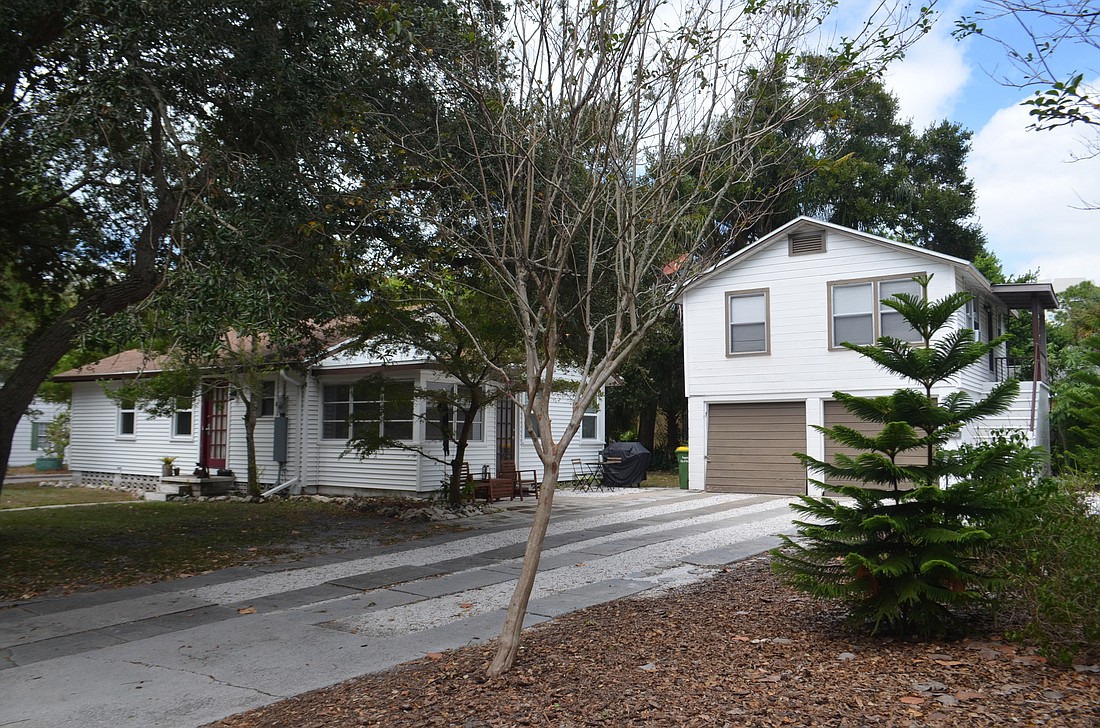- April 19, 2024
-
-
Loading

Loading

Janet Carlson is worried about a lack of affordable housing options for seniors in Sarasota County, but she’s hopeful county officials have identified strategies for effectively addressing the issue.
Carlson spoke at the Sept. 25 County Commission meeting to support one of those strategies: an ordinance allowing the construction of accessory dwelling units on single-family properties. The commission unanimously approved the ordinance, clearing the path for homeowners to build smaller residences on the same tract as their house.
Carlson, a licensed clinical social worker, felt motivated to speak up because of her experience interacting with older members of the community. She has been in contact with groups of women who have been forced to share homes when they would prefer to live alone, but circumstances force them to opt for a less expensive option. She believes it’s a widespread problem that doesn’t get the attention it deserves.
“It’s sort of an unseen thing,” Carlson said. “When you see people going out to the movies or doing something, you don’t know they’re not sure how they’re going to make their next rent.”
Carlson applauded the county proposal as a step forward from the preexisting regulations, which only allowed accessory dwellings if there wasn’t a kitchen included. She hopes accessory dwelling units can become an option for anyone seeking affordable housing, but particularly older people interested in living near their family without having to rely on them completely.
“There was just a lack of independence,” Carlson said. “What I think we’re really moving toward is being able to help the elderly age in place because nobody really wants to go to a nursing home.”
At the Sept. 25 meeting, Carlson noted Sarasota County’s adoption of an accessory dwelling ordinance was a departure from a similar conversation in Manatee County.
Earlier this year, the Manatee County Commission directed staff to keep working on ideas for permitting accessory dwelling units after an initial proposal drew outspoken opposition.
There are differences between the two proposals: The Sarasota County plan carried a smaller maximum unit size and required a homeowner to live on the property. Jane Grogg, the county’s manager of long-range planning and neighborhood services, said those provisions were included to make the ordinance a more incremental change to regulations.
“Let’s look at what we already have and tweak it to make it more meaningful,” Grogg said of the county’s approach.
Still, the proposal didn’t come without opposition. Dan Lobeck, the president of activist group Control Growth Now, suggested the change would represent a radical departure.
“Put yourself in the place of a homeowner in one of these affected neighborhoods, and all of a sudden, you wake up, and there’s a bulldozer next door building a second home on your adjoining lot for a renter,” Lobeck said. “Are you going to be happy about that? I don’t think a lot of people would.”
He expressed concern about whether existing infrastructure could handle the impact of accessory dwelling units. Although he said the group supported the county taking some steps toward improving housing affordability, he cited a citizen survey that indicated more county residents are concerned about traffic and growth than affordable housing. By approving the accessory dwelling ordinance, he said the county was “standing those priorities on their head.”
Supporters of the proposal were critical of Lobeck’s perspective, including Jon Mast, chairman of the county’s Affordable Housing Advisory Committee and CEO of the Manatee-Sarasota Building Industry Association.
“Those speaking against this subject are myopic and callous and would prefer to limit those in need of affordable housing to further their goal to eliminate any new building and development,” Mast said.
Although the units do not come with a mandatory affordability requirement, Grogg said the size of the units will naturally limit the cost of living in an accessory dwelling. Grogg acknowledged accessory dwelling units alone are unlikely to significantly affect affordable housing problems in Sarasota, but she said it was part of a broader series of policy changes the county was pursuing.
Commissioner Nancy Detert said she supported the vision of the accessory dwelling ordinance, but she was curious how staff would make sure the reality lined up with what the county hoped to achieve. Grogg said the proposal focused on single-family areas because that would ensure the infrastructure to support residences was already in place.
She added that the county intended to monitor the construction of new accessory dwelling units to see if any future modifications to the regulations might be necessary.
“It’s not going to pop up, thousands of them overnight,” Grogg said. “We’re going to be able to watch and see how it’s implemented.”